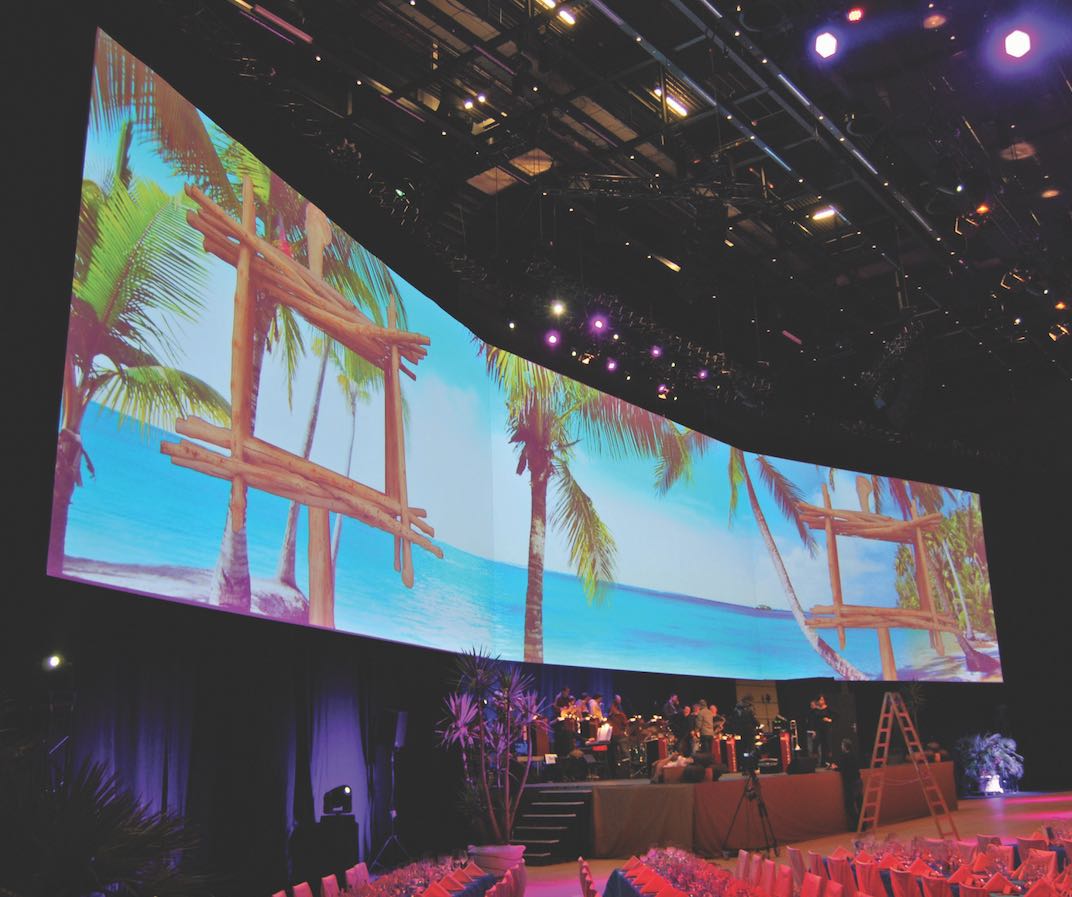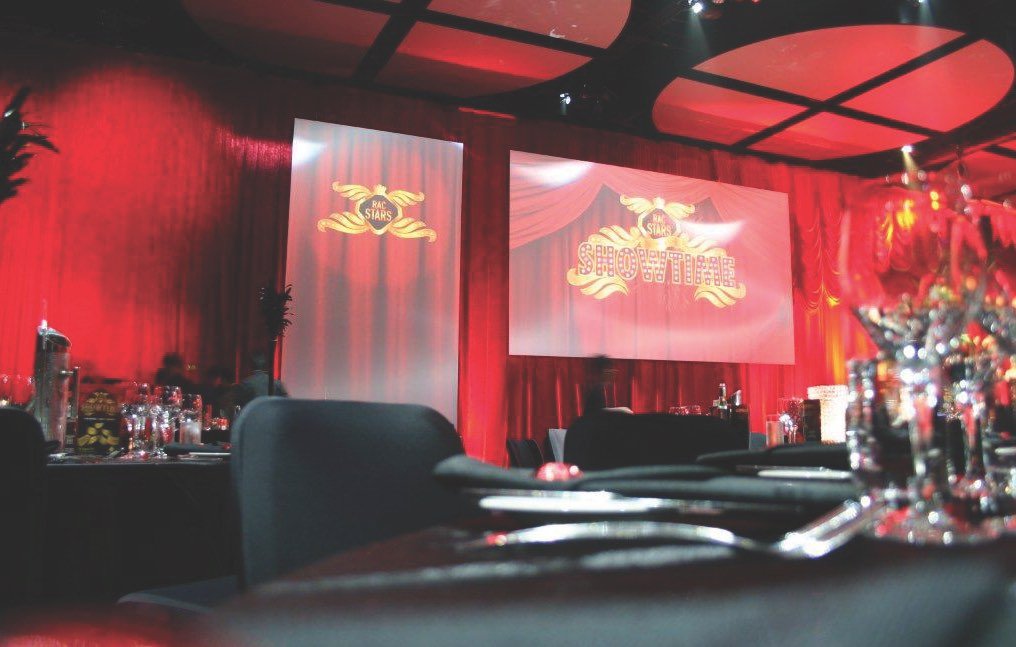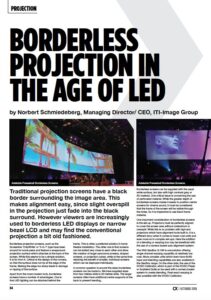News
25 Oct 2018
Borderless Projection in the Age of LED
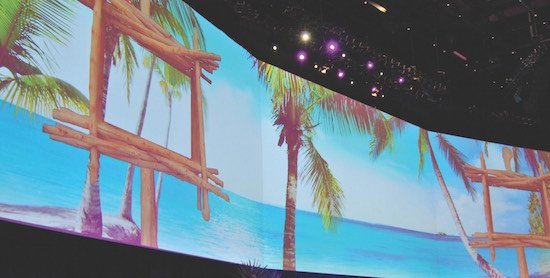
Subscribe to CX E-News
PROJECTION
Borderless Projection in the Age of LED
by Norbert Schmiedeberg, Managing Director/CEO, ITI-Image Group
Traditional projection screens have a black border surrounding the image area. This makes alignment easy, since slight overspill in the projection just fade into the black surround. However viewers are increasingly used to borderless LED displays or narrow bezel LCD and may find the conventional projection a bit old fashioned.
Borderless projection screens, such as the Screenline ‘OnlyWhite’ or ‘3-in-1’ type have been around for some years and feature a wraparound projection surface which attaches at the back of the screen. While this seems to be a simple solution, it is far from it. Critical is the design of the corners, so that the surface does not rip at the edge of the frame.
Making the edge too sharp leads to damage or ripping of the surface. Apart from the more modern look, borderless screens have a number of advantages. One is that LED lighting can be attached behind the frame. This is often a preferred solution in home theatre installation. The other one is that screens can be butted very close to each other and allow the creation of larger panorama screens, shaped screens, or projection cubes, while at the same time retaining the benefit of smaller, individual screens which can be deployed individually.
A common question is around the sizes borderless screens can be made to. We have supplied sizes from two metres wide to 20 metres wide. The larger screens often have additional centre supports at the back to prevent bending.
Borderless screens can be supplied with the usual white surface, but also with high contrast grey or 3D material. One critical issue is concerning the use of perforated material. While the greater depth of borderless screens makes it easier to position centre screens for cinema sound, it must be considered that the frame of the screen will be visible through the holes. So it is imperative to use black frame material.
One important consideration of borderless screens is the set-up. Projectors must be perfectly aligned to cover the screen area without undershoot or overspill. While this is no problem with high-end projectors which have alignment tools built in, it is a different story when it comes to lower cost units and even more so in complex set-ups. Here the addition of a blending or warping box may be beneficial with the use of a camera-based auto alignment system.
The VNS GeoBox G-106 is one solution offering single channel warping capability at relatively low cost. More complex units which even have 4k/60 input and blending capabilities are also available in the GeoBox range. On the other side, the use of the VIOSO Calibrator, which is part of the VIOSO Player or Anyblend Suite an be used with a camera based system to create blending. Pixel exact warping is also possible with the VIOSO Calibrator.
Creating large format multi- projection screens using borderless screen technology
With increasingly powerful projectors, we see a requirement for ever larger projection screens. Screen sizes of 10, 15, or 20 metres and wider are not uncommon anymore. However these large screens are expensive to manufacture and may cost as much as a small car. Considering that a 15 by five metre screen covers a surface area of 75 square metres, as much as a small apartment, it is easy to understand why these products are costly.
So for many smaller and medium sized rental companies, the acquisition of such large screens is simply not viable, in particular if they are only used two or three times a year. Furthermore, not many venues can accommodate such large screens. The use of smaller, borderless screens is the solution in these cases.
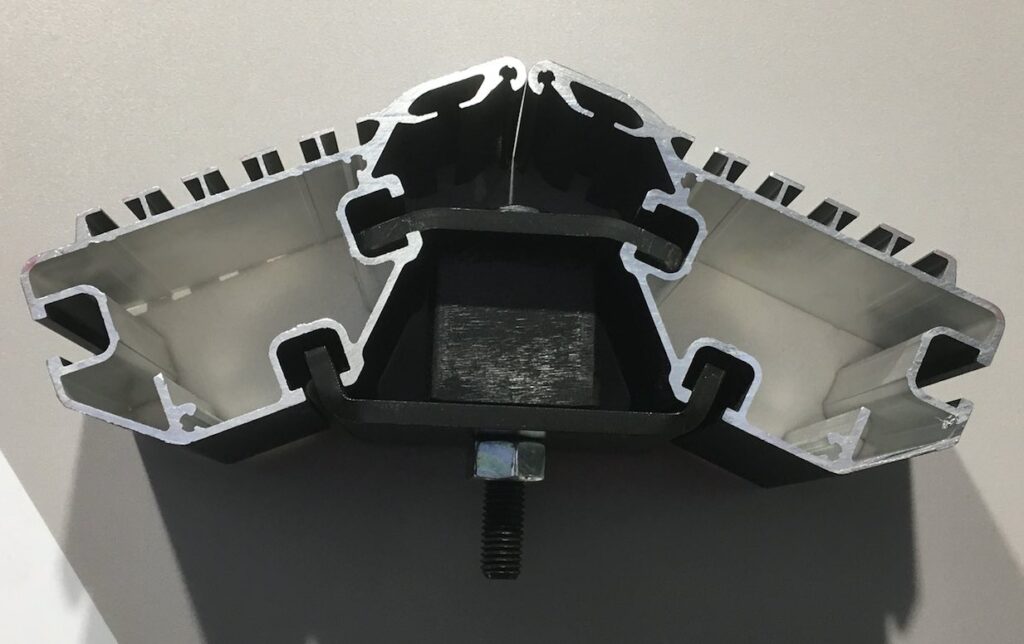 Let’s take the typical 16’ by 9’ (488cm by 274cm) screen many rental companies use. Combining three of these screens makes a screen 14.6 metres wide. Using the manufacturer provided hinges allows for a very tight fitting of the screens, so that the vertical gap is minimized and is hardly visible in projection. After the event the three screens can be used individually and thus increase revenue earning possibilities for the operator.
Let’s take the typical 16’ by 9’ (488cm by 274cm) screen many rental companies use. Combining three of these screens makes a screen 14.6 metres wide. Using the manufacturer provided hinges allows for a very tight fitting of the screens, so that the vertical gap is minimized and is hardly visible in projection. After the event the three screens can be used individually and thus increase revenue earning possibilities for the operator.
An additional benefit is that the screens can be set-up at angles, allowing either a better utilisation of the space or the design of more creative set-ups. These screens could also be set-up in a portrait format, providing in our example a screen of 488cm high x 822cm wide. ITI-Image Group provides the Screenline NewOnlyWhite or ‘3in1’ frame system as borderless screens, both in standard aspect ratios as in custom sizes.
This article first appeared in the October 2018 edition of CX Magazine – in print and online. CX Magazine is Australia and New Zealand’s only publication dedicated to entertainment technology news and issues. Read all editions for free or search our archive www.cxnetwork.com.au
© CX Media
The theme for the October 2018 edition of CX Magazine was ‘Projection’. Read more:
Creative Projection Mapping with TDC’s Pete Lynn
Antartica – While You Were Sleeping
Choosing the Best Projector
Technology Engages Students in Learning
From Projector to Plate – Encore Serve up a Sensory Feast
3D Modular Panels for Projection Mapping
Borderless Projection in the Age of LED
Video Projection History – The Talaria
Simon Byrne: Let There Be Projected Light
Duncan Fry: Snow Job – The Projector from the Smithsonian
Subscribe
Published monthly since 1991, our famous AV industry magazine is free for download or pay for print. Subscribers also receive CX News, our free weekly email with the latest industry news and jobs.


